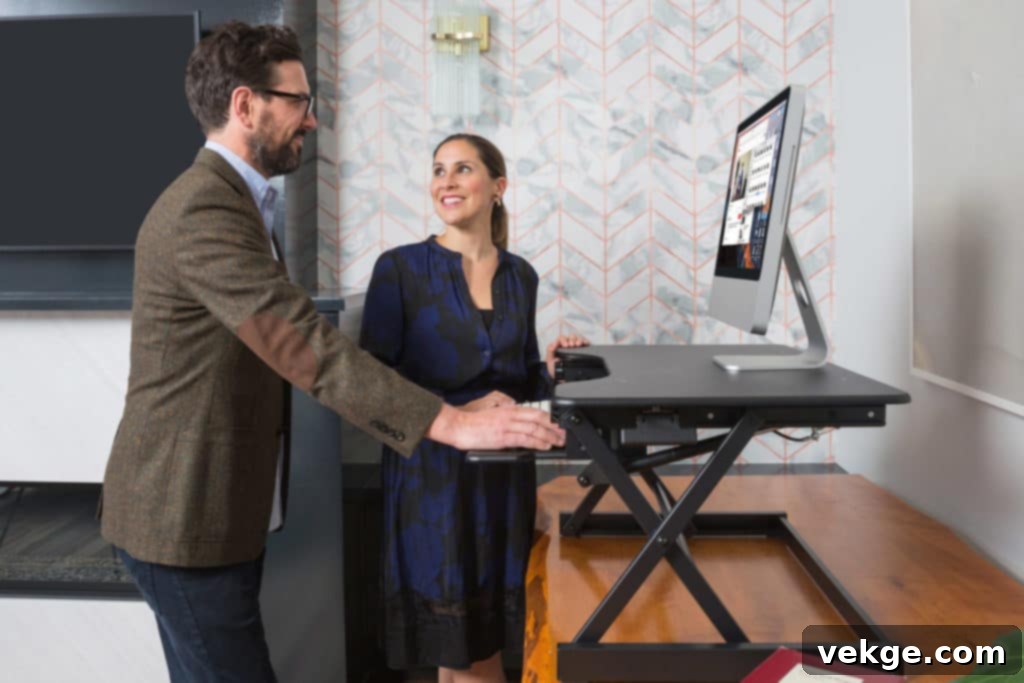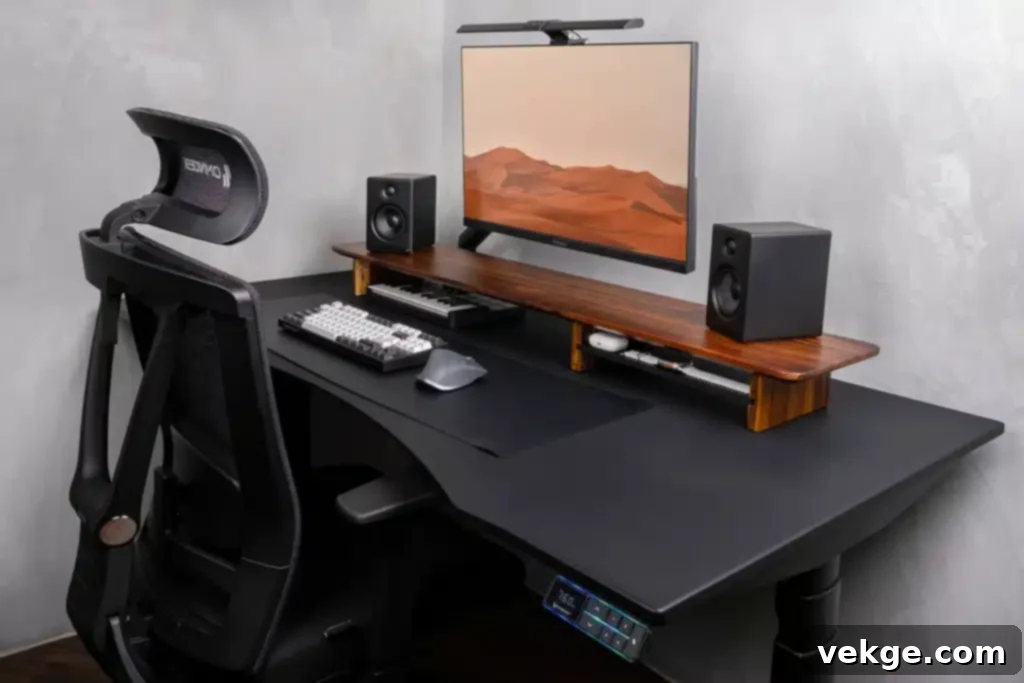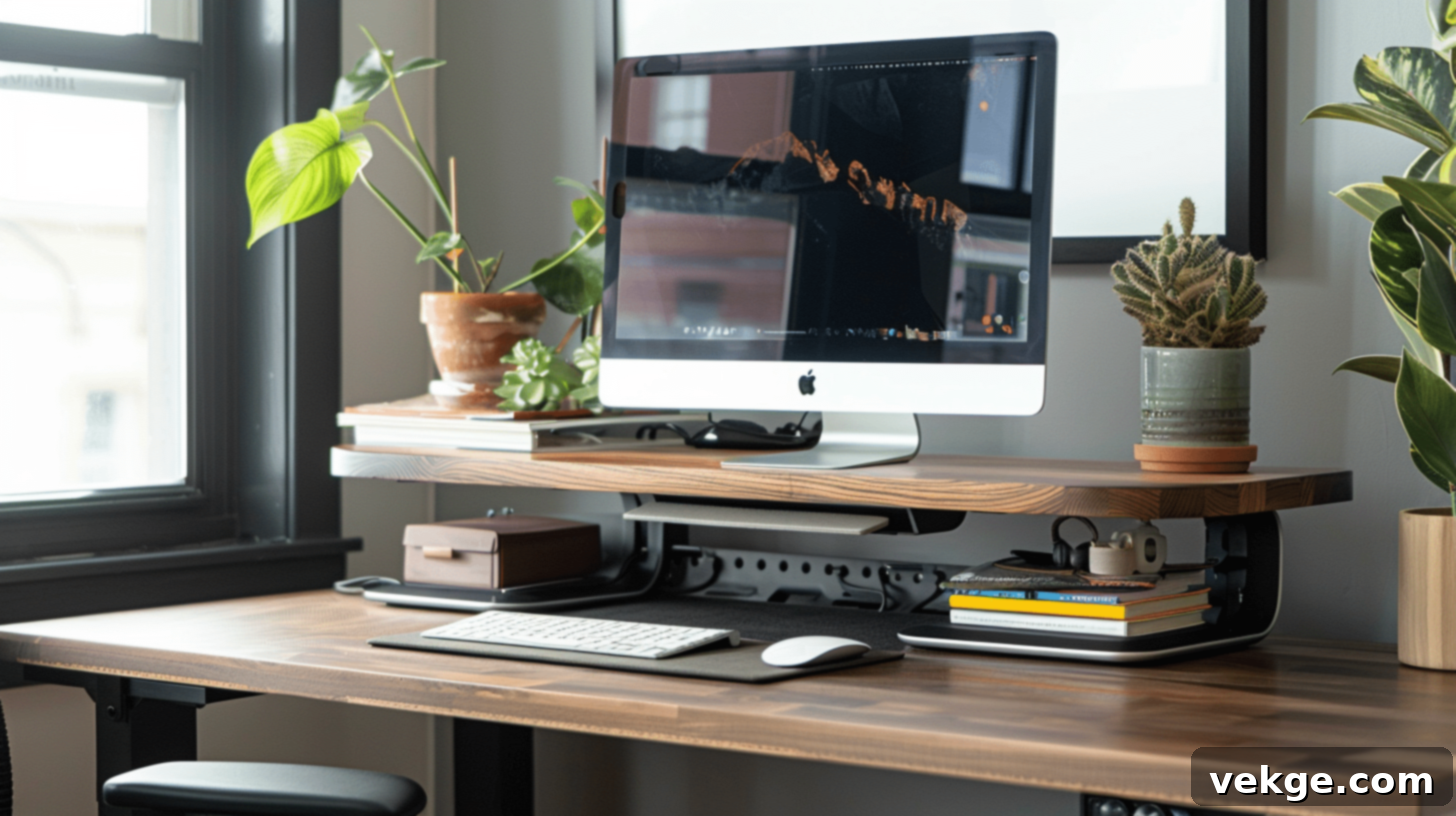Transform Your Workspace: The Ultimate Guide to Ergonomic Desk Risers for Health and Productivity
In today’s demanding and often sedentary work environment, creating an ergonomic workspace is no longer a luxury but a necessity for sustained productivity and overall well-being. Prolonged sitting has been linked to numerous health issues, from chronic back pain and poor posture to increased risks of cardiovascular disease and obesity. This is where a desk riser emerges as a game-changer. This innovative tool allows you to effortlessly alternate between sitting and standing positions throughout your workday, transforming your standard desk into a dynamic, flexible workstation.
By empowering you to switch positions, a sit-stand desk riser actively combats the detrimental effects of a stationary lifestyle. This comprehensive guide will delve into the profound benefits of integrating a desk riser into your daily routine, walk you through the process of selecting the perfect model, provide step-by-step instructions for an optimal setup, and share invaluable tips and tricks to maximize your comfort, efficiency, and long-term health.
The Multifaceted Benefits of Embracing a Desk Riser
Before we explore the practicalities, it’s crucial to understand the compelling advantages that an ergonomic desk riser brings to your professional and personal life. These benefits extend beyond mere comfort, impacting your physical health, mental acuity, and overall job satisfaction.

- Significantly Improved Posture: One of the primary advantages of a desk riser is its ability to facilitate better posture. By allowing you to adjust the height of your monitor, keyboard, and mouse to ergonomically correct positions, both while sitting and standing, you can maintain a neutral spine. This ensures your monitor is at eye level, preventing neck strain, and your arms are at a 90-degree angle, alleviating wrist and shoulder tension. Over time, consistent good posture can strengthen your back muscles and significantly reduce chronic aches.
- Increased Physical Activity and Reduced Sedentary Risks: Alternating between sitting and standing actively boosts your daily activity levels. Even subtle movements while standing, such as shifting weight, can increase your metabolic rate compared to prolonged sitting. This increased movement is vital in counteracting the health risks associated with a sedentary lifestyle, including cardiovascular disease, type 2 diabetes, and obesity. It promotes better blood circulation and can even help in burning more calories throughout the day.
- Enhanced Focus, Concentration, and Productivity: Numerous studies suggest that standing desks, including desk risers, can lead to improved focus and productivity. When you’re comfortable and free from the aches and pains caused by poor ergonomics, your mind is less distracted by discomfort. Standing can also increase blood flow to the brain, enhancing mental alertness and reducing fatigue, which translates to sustained concentration and more efficient work output.
- Effective Alleviation of Back Pain: For many office workers, back pain is a pervasive issue linked directly to prolonged sitting. A desk riser offers a powerful solution by allowing you to periodically stand up. Standing helps to decompress the spine, reduce pressure on spinal discs, and engage core muscles, which can significantly alleviate existing back pain and prevent its recurrence. This active change in posture promotes a healthier, stronger spine.
- Boosted Energy Levels and Mood: Beyond physical benefits, the ability to move and change positions can have a positive impact on your mental state. Standing can prevent the sluggishness often associated with long periods of sitting, leading to higher energy levels. This increased vitality often correlates with an improved mood, reduced stress, and a greater sense of well-being throughout the workday.
Selecting the Ideal Desk Riser for Your Needs
Choosing the right desk riser is a pivotal step towards optimizing your ergonomic workspace. With a variety of options available, considering these factors will ensure you make an informed decision that perfectly suits your requirements:
- Size and Compatibility with Your Existing Desk: Before making a purchase, meticulously measure your current desk’s surface area. Ensure the chosen desk riser provides ample space for all your essential equipment – your monitor (or dual monitors), keyboard, mouse, and any other peripherals. The riser should fit comfortably on your desk without overhanging or making your setup feel cramped.
- Adjustability and Height Range: The core function of a desk riser is its adjustability. Look for models with a broad height range to accommodate your specific body height, both when sitting and standing. Consider whether you prefer manual (spring-assisted) or electric height adjustment mechanisms. Electric risers often offer smoother transitions and memory presets, while manual options are typically more budget-friendly.
- Weight Capacity and Stability: Critically check the desk riser’s maximum weight capacity. It must be able to securely support all your equipment, including your monitor(s), laptop, and accessories, without any signs of strain or instability. Overloading a riser can compromise its functionality, safety, and lifespan. Furthermore, assess the overall stability; a wobbly riser can be distracting and uncomfortable.
- Ease of Use and Transition Mechanism: A good desk riser should allow for effortless transitions between sitting and standing. Manual risers should have a smooth, spring-loaded lift, while electric models should operate quietly and seamlessly with the push of a button. An intuitive design will encourage you to switch positions frequently throughout the day.
- Durability and Material Quality: Invest in a desk riser constructed from robust, high-quality materials. This ensures longevity and reliable performance. Look for sturdy frames (often steel) and durable surfaces. A well-built riser will withstand daily adjustments and continue to support your equipment effectively for years to come.
- Aesthetics and Design: While functionality is paramount, the visual integration of the desk riser into your existing workspace is also important. Choose a design and color that complements your office decor, contributing to a more pleasant and professional environment.
Optimal Setup of Your New Desk Riser for Maximum Ergonomics
Once you’ve chosen the perfect desk riser, proper setup is paramount to unlocking its full ergonomic potential. Follow these guidelines to ensure your workstation is optimized for comfort, health, and efficiency:

- Securely Position the Desk Riser: Place the desk riser centrally on your existing desk. Ensure it is stable, secure, and doesn’t wobble or shift during height adjustments. Its base should be firm, providing a solid foundation for your equipment.
- Adjust Monitor Height for Eye Level: This is a critical ergonomic adjustment. Whether sitting or standing, your monitor’s top edge should be at or slightly below eye level. Your eyes should naturally fall on the top third of the screen. This positioning prevents you from craning your neck up or down, reducing strain on your cervical spine. The monitor should also be at arm’s length to minimize eye strain.
- Optimal Keyboard and Mouse Placement: Position your keyboard and mouse so that your elbows form a comfortable 90-degree angle when typing or using the mouse. Your wrists should remain straight and neutral, not bent upwards or downwards. Consider an ergonomic keyboard and mouse, or a wrist rest, if you experience discomfort, but ensure a wrist rest supports the palm, not the wrist itself.
- Effective Cable Management: A tidy workspace is an efficient workspace. Organize your cables using ties, clips, or cable sleeves. This not only prevents clutter but also ensures that cables do not snag, pull, or interfere with the smooth adjustment of your desk riser, preventing damage to equipment or the riser itself.
- Lighting and Glare Reduction: Position your monitor to minimize glare from windows or overhead lights. Adjust your task lighting so it illuminates your workspace without creating reflections on your screen, which can lead to eye fatigue.
Mastering Your Desk Riser: Advanced Tips and Tricks
To truly harness the full potential of your ergonomic desk riser and sustain its benefits, incorporate these practical tips and tricks into your daily routine:
- Conscious Alternation Between Sitting and Standing: The key to a sit-stand desk is dynamic movement. Don’t simply choose one position for the entire day. Aim for a balanced routine, such as sitting for 30-40 minutes, then standing for 15-20 minutes. Start with shorter standing periods if you’re new to it, and gradually increase as your body adapts. Consider using a timer or an app to remind you to switch positions.
- Invest in an Anti-Fatigue Mat: If you plan to stand for extended periods, an anti-fatigue mat is an invaluable accessory. These cushioned mats reduce pressure on your feet, legs, and lower back, promoting minor muscle movements and improving circulation. This significantly enhances comfort and reduces fatigue, allowing you to stand for longer durations without discomfort.
- Prioritize and Maintain Good Posture: Whether you are sitting or standing, maintaining correct posture is paramount. Keep your back straight, shoulders relaxed and pulled slightly back, and your core gently engaged. Avoid hunching forward, slumping, or locking your knees when standing. Distribute your weight evenly, and perhaps use a small footrest when sitting if your feet don’t touch the floor.
- Integrate Regular Breaks and Stretches: Even with a desk riser, continuous work in any single position isn’t ideal. Incorporate short, regular breaks into your routine. Use this time to walk around, stretch your neck, shoulders, wrists, and legs. A quick walk to refill your water bottle or simply stepping away from your desk can significantly refresh your mind and body.
- Stay Adequately Hydrated: Keeping a water bottle within easy reach at your desk is a simple yet effective habit. Proper hydration is crucial for maintaining energy levels, focus, and overall bodily functions throughout your workday, helping you feel more alert and less fatigued.
- Personalize and Optimize Your Workspace: Enhance your efficiency and enjoyment by personalizing your desk riser setup. Consider accessories like a document holder, a phone stand, or a well-designed desk organizer. These tools can keep your workspace clutter-free and ensure frequently used items are easily accessible, further streamlining your workflow.
- Listen Attentively to Your Body’s Signals: Your body is your best guide. Pay close attention to how you feel throughout the day. If you experience any discomfort, pain, or excessive fatigue, adjust your setup, switch positions, or take a break. Ergonomics is about comfort and prevention, not endurance. Gradually adapt to standing and don’t push yourself beyond comfortable limits.
- Gradual Transition is Key: If you’re new to using a desk riser, avoid trying to stand for hours right away. Start with short standing intervals, perhaps 10-15 minutes every hour or two. Gradually increase the duration as your body strengthens and adapts. This gentle approach will prevent discomfort and make the transition much more sustainable.
Conclusion: Embrace a Healthier, More Productive Work Life
Transforming your workstation with an ergonomic desk riser is a powerful investment in your long-term health and productivity. By integrating this versatile tool, you can significantly enhance your work environment, actively promoting better posture, increasing physical activity, and fostering overall well-being. The days of being tethered to a single, static position are over; a sit-stand desk empowers you with dynamic flexibility.
By carefully choosing the right desk riser and meticulously setting it up according to ergonomic principles, you can unlock a multitude of benefits. Remember the core principles: consciously alternate between sitting and standing, always strive to maintain good posture, and most importantly, listen to your body’s unique needs and signals. With these practical tips and a commitment to a more active work approach, you’ll be well on your way to a healthier, more comfortable, and undeniably more productive workday, improving your quality of life both in and out of the office.
